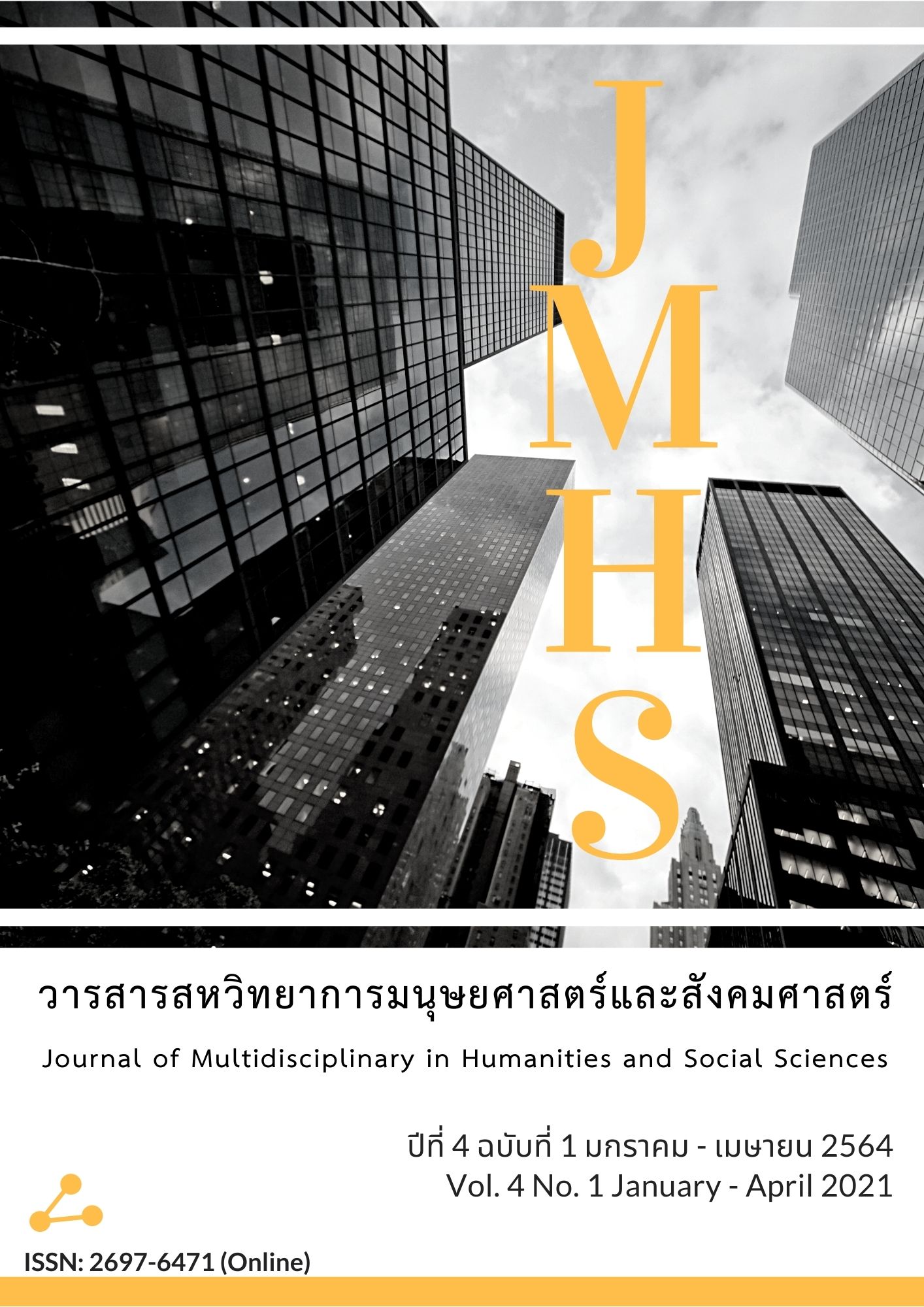กลยุทธ์การตลาดสีเขียวที่มีผลต่อการรับรู้ภาพลักษณ์ด้านการท่องเที่ยวของชาวไทยในเกาะเสม็ด จังหวัดระยอง
Main Article Content
บทคัดย่อ
บทความนี้นี้มีวัตถุประสงค์ 1) เพื่อศึกษากลยุทธ์การตลาดสีเขียวที่มีผลต่อการรับรู้ภาพลักษณ์ด้านการท่องเที่ยวในเกาะเสม็ด จังหวัดระยอง 2) เพื่อวิเคราะห์ความสัมพันธ์ระหว่างกลยุทธ์การตลาดสีเขียวกับการรับรู้ภาพลักษณ์ด้านการท่องเที่ยวในเกาะเสม็ด จังหวัดระยอง และ 3) เพื่อวิเคราะห์สมการถดถอยพหุคูณแบบเป็นขั้นตอน ในการวิเคราะห์กลยุทธ์การตลาดสีเขียวที่มีผลต่อการรับรู้ภาพลักษณ์ด้านการท่องเที่ยวในเกาะเสม็ด จังหวัดระยอง รูปแบบการวิจัยเป็นการวิจัยเชิงปริมาณ พื้นที่วิจัย คือ เกาะเสม็ด จังหวัดระยอง กลุ่มตัวอย่าง คือ นักท่องเที่ยวชาวไทยที่เคยมาท่องเที่ยวที่เกาะเสม็ด จังหวัดระยอง จำนวน 400 คน เครื่องมือที่ใช้ในการวิจัย คือ แบบสอบถาม การวิเคราะห์ข้อมูลโดยใช้สถิติเชิงพรรณนา ได้แก่ ค่าร้อยละ ค่าเฉลี่ย และส่วนเบี่ยงเบนมาตรฐาน การหาความสัมพันธ์ระหว่างกลยุทธ์การตลาดสีเขียวกับการรับรู้ภาพลักษณ์ด้านการท่องเที่ยวเกาะเสม็ด จังหวัดระยอง ใช้สถิติสหสัมพันธ์อย่างง่ายของเพียร์สัน ผลการวิจัยพบว่า กลยุทธ์การตลาดสีเขียว ด้านหัวใจสีเขียว ด้านแหล่งท่องเที่ยวสีเขียว ด้านกิจกรรมสีเขียวและด้านการบริการสีเขียว มีความสัมพันธ์กับการรับรู้ภาพลักษณ์ด้านการท่องเที่ยวเกาะเสม็ด จังหวัดระยอง โดยมีความผันแปรของการรับรู้ภาพลักษณ์ด้านการท่องเที่ยวเกาะเสม็ด จังหวัดระยอง ได้ร้อยละ 73.5 และมีค่าความแปรปรวน เท่ากับ 0.220
Article Details
ทัศนะและความคิดเห็นที่ปรากฏในวารสาร ถือเป็นความรับผิดชอบของผู้เขียนบทความนั้น และไม่ถือเป็นทัศนะและความรับผิดชอบของกองบรรณาธิการ
เอกสารอ้างอิง
กัลยา วานิชย์บัญชา. (2557). การวิเคราะห์สมการโครงสร้าง (SEM) ด้วย AMOS. (พิมพ์ครั้งที่ 2). กรุงเทพฯ: ห้างหุ้นส่วนจำกัดสามลดา.
จุฑามาศ วิศาลสิงห์. (2556). เส้นทางการก้าวกระโดดสู่การจัดการอย่างยั่งยืนและกรณีตัวอย่างเกาะสมุย. สืบค้นเมื่อ 20 กุมภาพันธ์ 2563, จาก http://www.etatjournal.com/mobile/index.php/menu-read-tat/menu-2013/menu-2013-apr-jun/45-22556-koh-samui
ลำยอง ปลั่งกลาง. (2554). การพัฒนาคุณภาพและมาตรฐานการท่องเที่ยวสีเขียว: กรณีศึกษาวิสาหกิจชุมชนการท่องเที่ยวจังหวัดพระนครศรีอยุธยาและอ่างทอง. พระนครศรีอยุธยา: สถาบันวิจัยและพัฒนา, มหาวิทยาลัยราชภัฏพระนครศรีอยุธยา.
สรชัย พิศาลบุตร. (2550). การสร้างและประมวลผลขอมูลจากแบบสอบถาม. กรุงเทพฯ: วิทยพัฒน์.
อรรจน์ เศรษฐบุตร. (2559). การตรวจวัดพลังงานตามมาตรฐาน ASHRAE. Energy Saving, 8(87), 32-33.
Baloglu, S., & McCleary, K. W. (1999). A model of destination image formation. Annals of Tourism Research, 26(4), 868-897.
Bartz, A. E. (1999). Basic Statistical Concepts. (4th ed.). New Jersey: Prentice-Hall.
Belch, G. E., & Belch, M. A. (2003). Advertising and promotion: An integrated marketing communication Perspective. (7th ed). New York: McGraw-Hill.
Chen, C. F., & Tsai, D. C. (2017). How destination image and evaluative factors affect behavioral intentions?. Tourism Management, 28(4), 1115-1122.
Chen, Y. (2010). The driver of green brand equity: Green brand image, Green satisfaction and green trust. Journal of Business Ethics, 92(3), 307-319.
Cronbach, L. J. (1974). Essentials of Psychological Testing. (3rd ed.). New York: Harper and Row.
Department of Tourism. (2019). Tourist statistics. Retrieved February 12, 2020, from http://tourism.go.th/subweb/list content/6/167/276
Hallmann, K., & Breuer, B. Z. (2010). The image congruence between sport event and destination on behavioral intention. Tourism Review, 65(1), 66-74.
Milman, A., & Pizam, A. (1995). The role of awareness and familiarity with a destination: The central Florida case. Journal of Travel Research, 33(3), 21-27.
Patrick, D. (2017). Green Marketing Strategies for Successful Sustainable Brands. Retrieved February 13,
, from www.greenbusinessinnovators.com/6-green-marketing-strategies-for-successful-sustainable-brands.
Tourism Authority of Thailand. (2016). 7 Greens Fair. Retrieved February 13, 2020, from http://7greens.tourismthailand.org/th/green_news/detail/848


